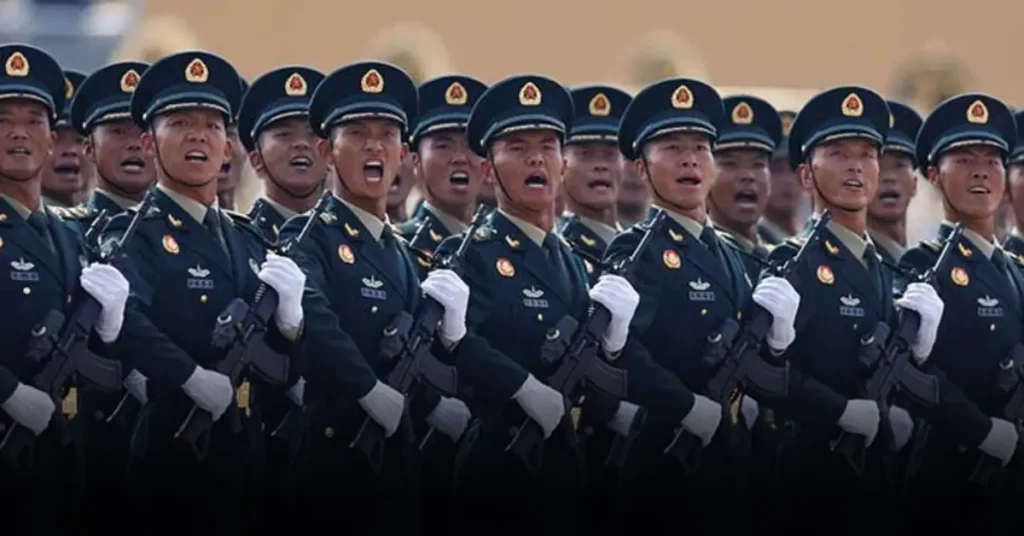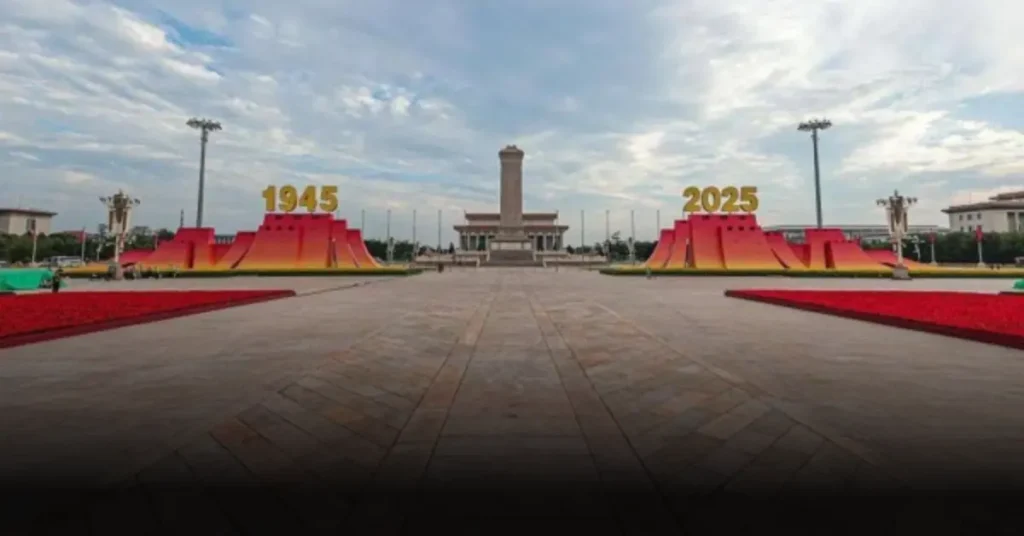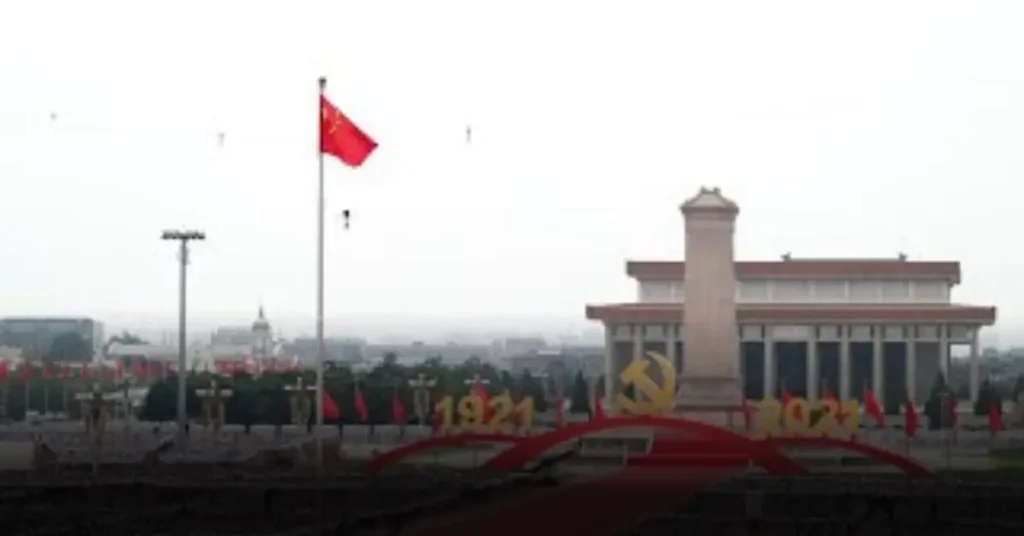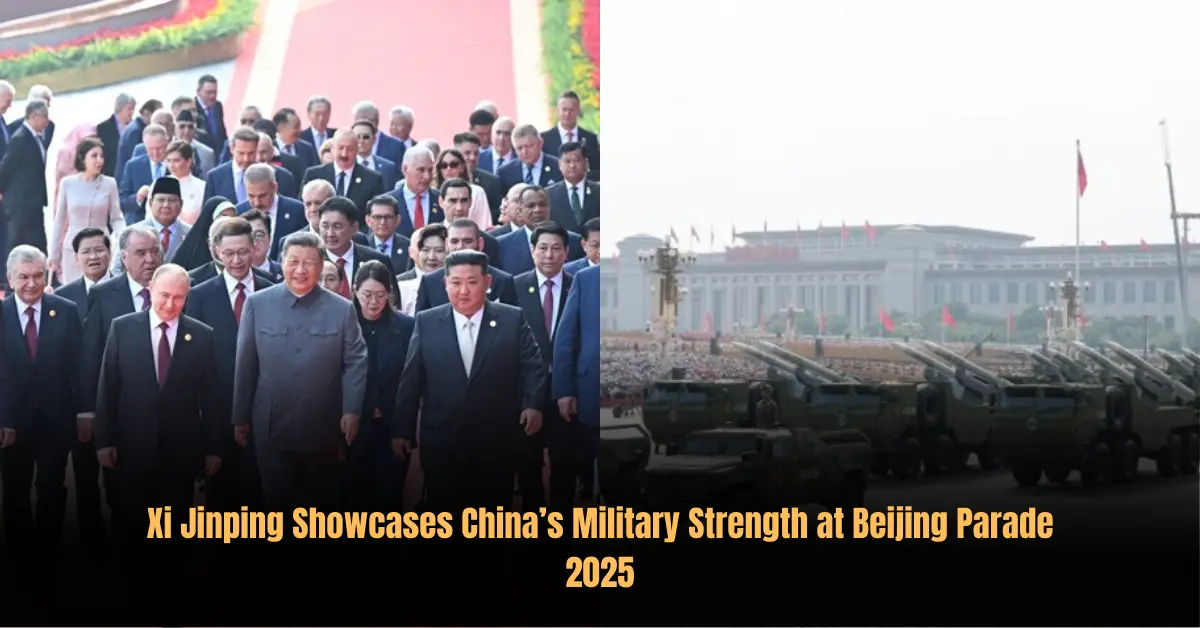Xi Jinping Showcases China’s Military Strength at Beijing Parade 2025
The Stage is Set: A Geopolitical Spectacle Unfolds
On September 3, 2025, Beijing held a very big military parade. It was to mark the 80th anniversary of China’s victory in the war against Japan and the end of World War II. The event was huge, with many soldiers, weapons, and new technology. But the real meaning was not only in the show. It was in the message China wanted to send to the world and to its own people.
An Unprecedented Gathering of Power and Defiance
The parade was a clear sign that China is now a global power. President Xi Jinping stood at Tiananmen Square, leading the event. He showed China’s growing military strength and its fast modernization. The People’s Liberation Army (PLA) displayed many new weapons, both normal and advanced.
This was not only about history. It was also about the future. China wanted to show that it is confident, powerful, and ready to defend itself.
The Red Carpet Rollout: A Who’s Who of Global Leaders
The guests at the parade were just as important as the weapons on display. Standing beside Xi Jinping were Russian President Vladimir Putin and North Korean leader Kim Jong Un. Kim’s visit was very rare, which made it even more important. The three leaders standing together sent a strong signal. Many people saw it as a direct challenge to the United States and its allies.
Leaders from Central Asia, Southeast Asia, and Pakistan were also present. This showed China’s growing influence in the Global South. At the same time, leaders from the U.S., Europe, and Japan were not there. Their absence showed the deep division in world politics today.

Decoding Xi’s Opening Address: Words of Warning and Unstoppable Ambition
In his opening speech, Xi Jinping spoke about national pride and China’s future. He promised that China wants peaceful development. But the massive military display behind him made his words more serious.
He honored the veterans and thanked the Chinese people for their sacrifices. But he also made it clear that the PLA’s job is to protect China’s sovereignty and unity. Many people saw this as a message about Taiwan.
His speech was a mix of pride and warning. It showed China’s ambition and its readiness to stand strong against the U.S. and allies.
A Parade of Steel: A Showcase of Unmatched Firepower
The most exciting part of the parade was the new weapons on display. This showed how fast China is modernizing its military. The weapons were not only for defense. They were also made for future wars in land, sea, air, space, and even cyberspace.
The Ground Forces: Marching into the Future
Thousands of soldiers marched in perfect lines. Tanks, trucks, and armored vehicles rolled through the square. But the most surprising part was the new ground technology.
China showed autonomous machines, including four-legged “robot wolves.” These robots and unmanned ground vehicles can do dangerous tasks like finding mines, carrying supplies, or spying. This means fewer human soldiers will be at risk. China clearly wants to use more automation in war.
Sentry of the Skies: China’s Next-Generation Air Force
The air show was another highlight. Fighter jets, bombers, and helicopters filled the sky. The big reveal was the new J-35 stealth fighter for aircraft carriers.
This fighter is fifth-generation, with stealth technology. It is made for the PLA Navy and shows that China wants to project its power far from its borders. This is a step toward competing with top air forces like that of the U.S.
Masters of the Deep: Unveiling the Naval Vanguard
Even though naval forces were not in the sea, their new technology was displayed. The parade showed large unmanned underwater drones. These looked like submarines but were smaller and tube-shaped.
They are designed for long missions under the sea, such as spying and surveillance. Many experts believe these drones could be used against U.S. and Western navies in the Indo-Pacific.
The event also included unmanned aerial vehicles (UAVs) and other advanced systems. This shows that China is building strong abilities for asymmetric warfare, where smart technology can counter stronger enemies.
The Rocket Force: Unveiling China’s “Ace in the Hole”
The most powerful moment came from the Rocket Force. For the first time, China showed its full nuclear triad. This means nuclear weapons that can be launched from land, sea, and air.
The parade introduced new missile systems. These included the DF-5C ICBM, which is silo-based, and the DF-61, which is mobile. Both can reach targets across the U.S. mainland. This was a very clear warning. It showed that China is now a strong nuclear power.
The New Age of Warfare: Unmanned and Hypersonic
This parade was not only about big weapons. It also showed the future of warfare. Future wars will be about speed, machines, and precision.
Drones of Dominance: The Future is Unmanned
Drones were everywhere in the parade. China displayed air drones, land drones, and sea drones. One major display was the new AI-driven wingman drones. These drones can fly with fighter jets, help with spying, attack enemies, or defend aircraft.
The variety of drones showed that China is building a layered unmanned force. It can fight on land, sea, and air without always needing human soldiers.
China also showed laser weapons designed to shoot down enemy drones. This means China is preparing not only to use drones but also to defend against them.
Hypersonic Heralds: Speed and Stealth Beyond Imagination
One of the most surprising things in the parade was China’s new hypersonic missiles. These missiles were shown to the world for the first time. They are called YJ-15, YJ-17, YJ-19, and YJ-20.
These missiles are made to attack big ships, like aircraft carriers. They can fly faster than Mach 5. This means they travel more than five times faster than the speed of sound. Because of this, normal defense systems cannot stop them.
For countries like the United States, this is a big problem. Their large navy ships are now in danger. The parade showed that China has many fast and strong weapons. It was also a message to America. The message was clear: China is ready to fight and can challenge U.S. ships in the Pacific Ocean.
The Invisible Arsenal: Stealth Aircraft and Cyber Warfare Units
The parade did not only show weapons we can see. It also showed the hidden side of war.
China showed the J-35 stealth fighter jet. A stealth jet is very hard to see on radar. This means enemies cannot easily find or stop it.
The parade also showed the PLA Cyberspace Force. This is China’s cyber army. These soldiers fight on the internet. They can attack other countries through computers and networks.
By showing stealth jets and cyber units, China told the world that future wars will not only be on land, sea, or air. They will also be in cyberspace.

The Message Behind the Might: Beyond a Show of Force
The parade was not only about showing weapons. It was also about sending messages. These messages were for people inside China and for countries outside China.
A Warning to the West: The Shifting Global Order
The new hypersonic missiles and nuclear missiles were a warning to Western countries. They showed that China is not only thinking about defending itself. China now wants to show its power around the world.
This was a sign that the world order is changing. China wants to stand as a strong power next to the United States. The parade was a way of saying: “We are ready to protect our interests anywhere.”
The Taiwan Question: A Subliminal Message to the Island
The parade also sent a message to Taiwan. The new anti-ship missiles and stealth jets showed that China is ready to stop American help for Taiwan if there is a war.
These missiles can attack U.S. ships. The hidden message was clear: if America comes to protect Taiwan, China will fight back with strong force.
At the same time, President Xi’s speech used the word “unification.” This was another sign to Taiwan that China will not give up its goal of becoming one country again.
Securing the Indo-Pacific: Beijing’s Newfound Resolve
The parade also showed China’s plan for the Indo-Pacific region. The Indo-Pacific includes the South China Sea and nearby areas. China has many disputes there with other countries.
By showing its new navy and anti-ship weapons, China gave a message. It said it is ready to protect its claims and its territory in the sea.
Domestic Propaganda: Unifying the Nation Through Spectacle
Inside China, the parade had another purpose. It was used to make the people feel proud and united.
The government wanted to show that China is strong. The weapons made people believe their country is powerful. It also reminded them of history.
The parade happened on the 80th anniversary of World War II victory. This was used to show that China suffered in the past but is now strong again. The Communist Party used this event to prove it can lead China to a bright future.
The Unspoken Tensions: Global Reactions and Repercussions
The whole world was watching the parade. Different countries had different reactions. Some were worried, and some were careful.
Washington’s Calculated Response: A Mix of Calm and Concern
In the United States, the government tried to look calm. Officials said the parade was just normal. But in secret, experts were very concerned.
The new hypersonic missiles, nuclear weapons, and stealth jets could change U.S. plans in the Pacific. The U.S. knows its navy ships are now more at risk.
Regional Jitters: How Neighbors are Reacting
Countries close to China, like Japan, South Korea, and others in Southeast Asia, felt nervous. Many of them have sea disputes with China.
The parade showed how strong China has become. These countries may now spend more money on defense. They will also likely work more closely with the United States for protection.
The “Axis of Upheaval”: Analyzing the Xi-Putin-Kim Power Trio
Another important part of the parade was the guests. Russian President Vladimir Putin and North Korean leader Kim Jong Un were both there.
This showed that China, Russia, and North Korea are getting closer. Together, they stand against the United States and its allies.
This group can be seen as a new “Axis of Upheaval.” It is a big challenge for the world, because it creates more division and tension. Seeing Xi, Putin, and Kim together was a strong sign that global power is shifting.
The Aftermath: What Comes Next?
The parade ended, but its effect will continue. The weapons shown are real. Many of them are already in use or will soon be used.
From Parade to Policy: How Display Translates to Action
The parade was not only about showing off. It was also about confirming China’s plans. The weapons are not just models. They will now be part of China’s military.
This means the parade will also shape China’s foreign policy. These weapons will play a big role in how China deals with the United States and other countries.

The Economic Fallout: Military Spending and Global Trade
China spends more money on its military every year. Even though its economy has problems, defense is still a top priority.
This large spending will also affect the world. It will change trade and technology. China may also try to sell its new weapons to other countries in the future.
A World Remade: A New Era of Geopolitical Competition
The 2025 parade will not be forgotten. It showed that China is no longer just rising. It is now a strong global power.
The guests, the weapons, and the speeches all made one message clear: China is preparing for the future. It wants to be ready to “fight and win wars.”
This marks the start of a new era of competition in the world.


